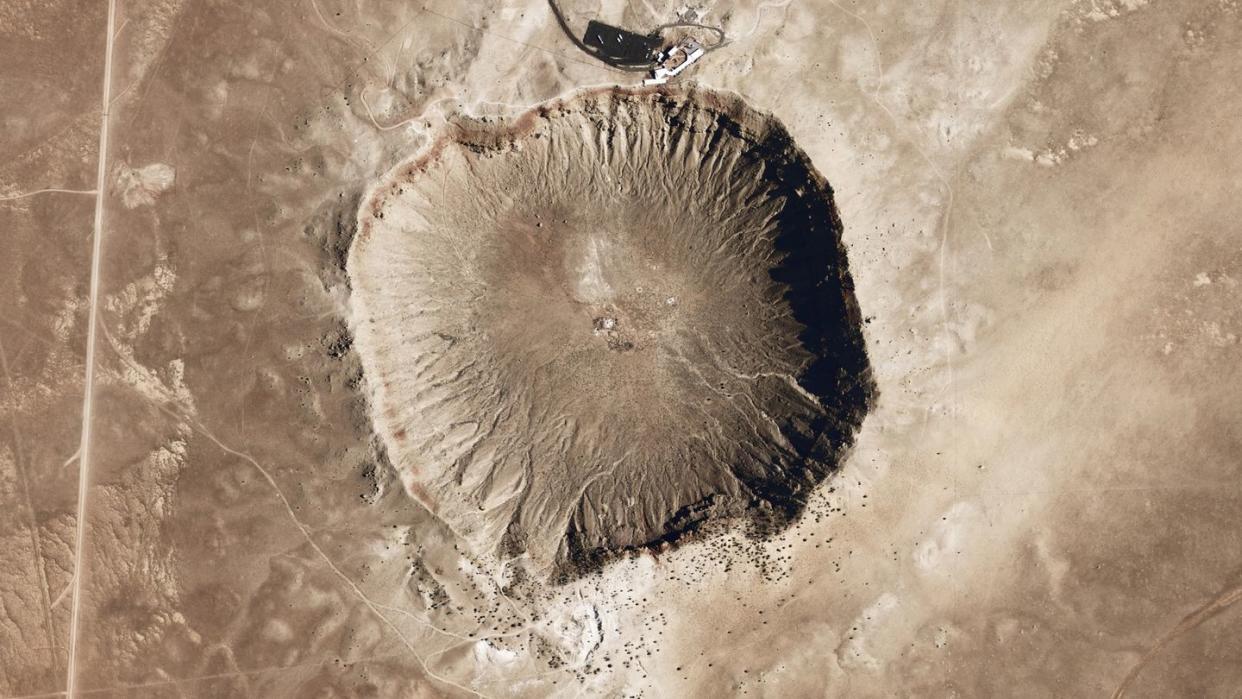A Crater in Arizona Is Proof of the Universe's Wicked Curveball

"Hearst Magazines and Yahoo may earn commission or revenue on some items through these links."
Various crater shapes can be found throughout the Solar System, and these differences can form from a variety of factors that affect impact.
Although velocity is one major ingredient, a new study looks at previously overlooked attributes, such as a meteorite’s spin or rubble-like composition.
This study uncovers that impact craters like the Barringer Crater in Arizona probably formed from fast-spinning, loosely bound meteorites.
Earth isn’t nearly as pock-marked as the Moon or Mars—thanks to the Earth’s mesosphere, which protects the planet from large meteoroids—but that doesn’t mean impacts aren’t possible. Just ask the dinosaurs.
A “modern” example of this impact exception is the Barringer Crater, located 37 miles east of Flagstaff in the desert of northern Arizona. Although it formed around 50,000 years ago, the impact site is remarkably well-preserved, thanks to its arid surroundings.
Analyzing this impact crater by creating various computer simulations, scientists from Brazil’s University of Campinas determined that the iron/nickel-rich meteor was likely spinning fast when it struck the Earth during the late Pleistocene. It was also probably composed of clumps of smaller rocks loosely held together by gravity. The results of the study were published last month in the journal Physical Review E.
“We carried out discrete element method computations of spinning granular projectiles impacting onto cohesionless grains for different bonding stresses, initial spins, and initial heights,” the paper reads. “Our results shed light on the dispersion of the projectile’s material and the different shapes of craters found on Earth and other planetary environments.”
Impact craters are not a one-size-fits-all geological feature. Some are deep and narrow (with various formations within the crater itself) while others, such as Barringer Crater, are wide and shallow—basically your mind’s-eye definition of an impact site.
To determine how meteors form these disparate-shaped holes (apart from simple velocity), the researchers created simulations with virtual projectiles that were clusters of 2,000 tiny spheres. This digital space detritus was then “dropped” on a grainy layer that stood in for Earth’s surface. What the researchers discovered in doing this is that rapidly rotating asteroids created wide and shallow sites, just like the one at Barringer Crater. That means, to borrow baseball parlance, the meteorite—called Canyon Diablo—was more of a wicked curveball than some kind of spin-less fastball.
However, the constituent rubble that formed Canyon Diablo was also loosely bound, and when the meteorite impacted the surface, some of the energy of the collision was used to break apart the rubble’s bonds. While the rubble scattered, it did so with less energy and didn’t burrow as far. Fast-spinning asteroids could create deeper craters, but the components need to be tightly bound, unlike at Barringer crater.
Barringer Crater isn’t the only curveball impact site in the world—or even in the U.S. Live Science notes that the Flynn Creek crater in Gainesboro, Tennessee, which formed 100 million years before dinosaurs walked the Earth, was likely created by a similar curveball-type meteorite.
With so many various impact sites throughout the Solar System, each with different “pitching” characteristics, the universe should at the very least be in the running for an honorary Cy Young Award.
You Might Also Like

